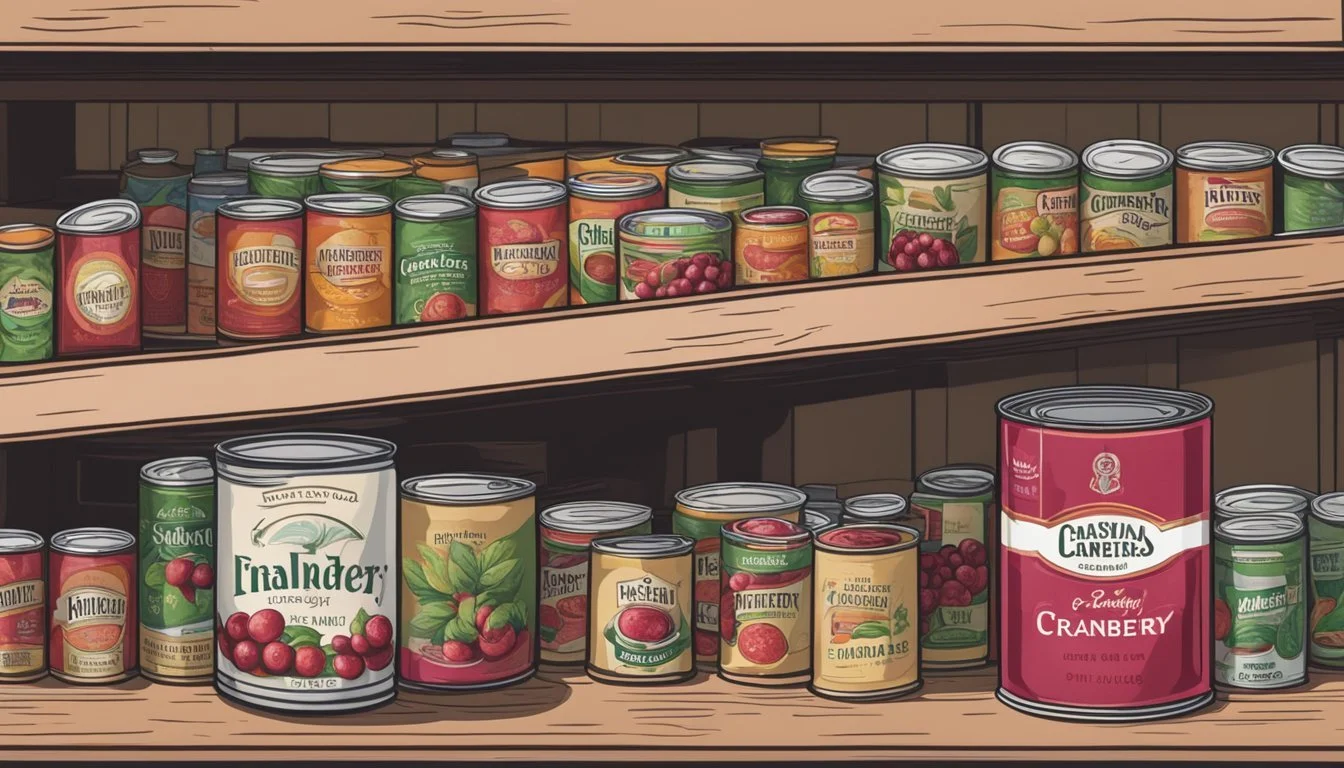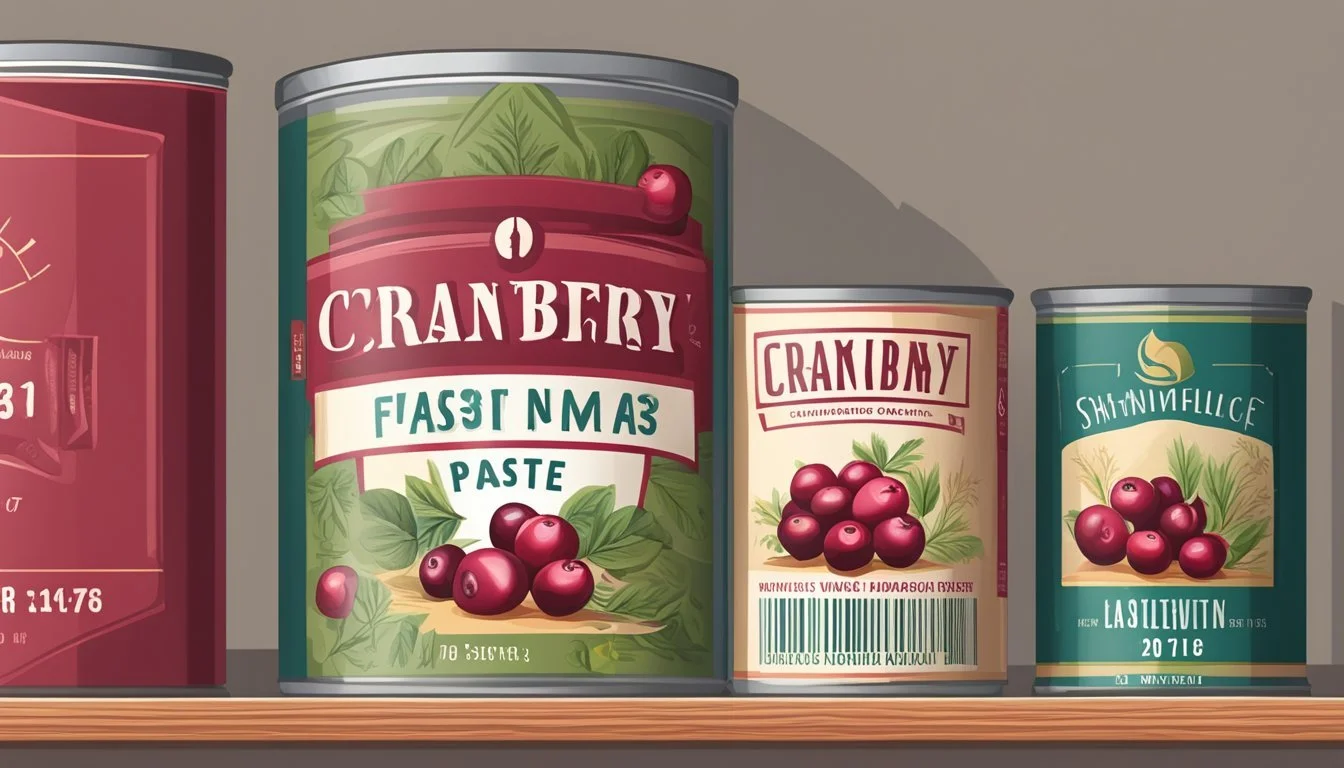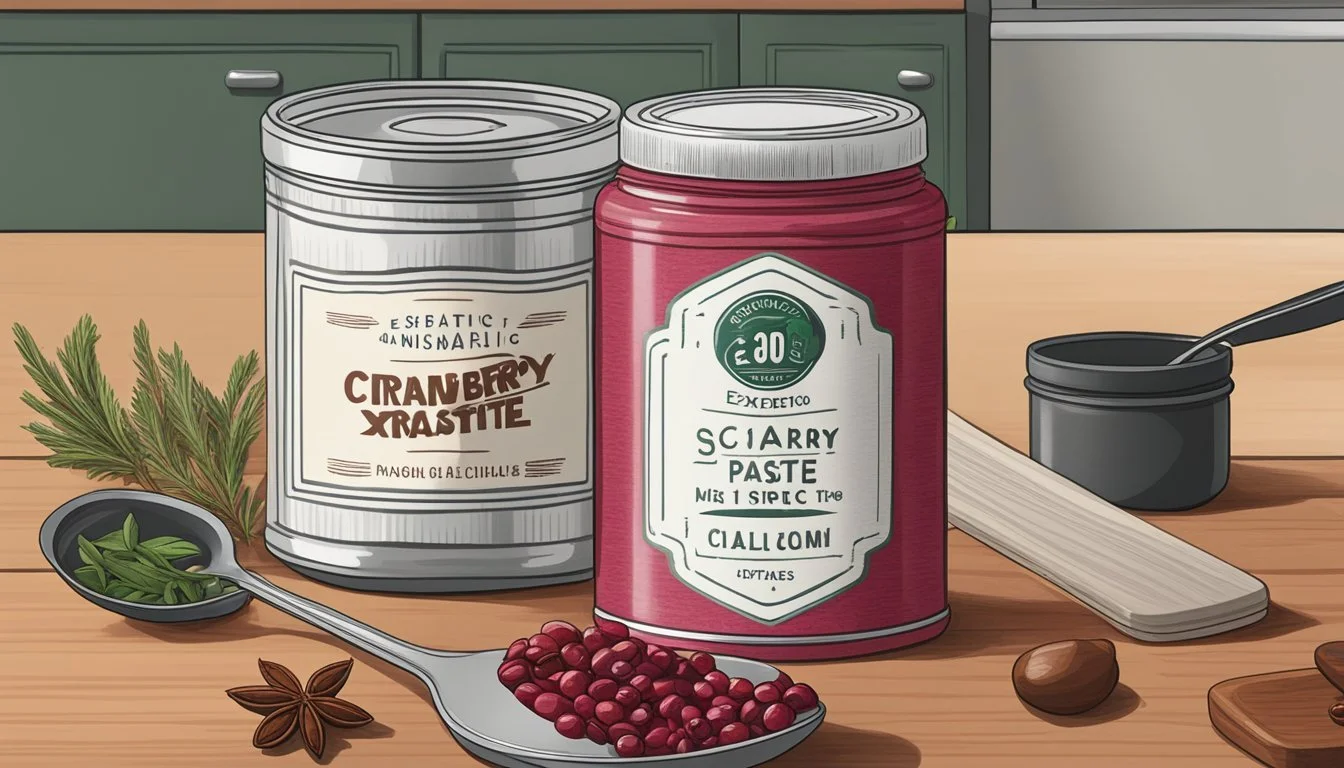How Long Does Canned Cranberry Paste Last?
Unveiling Shelf Life Facts
Canned cranberry sauce, a staple at many festive tables, is known for its shelf stability due to the canning process, which involves heating and sealing the product to prevent spoilage. Consumers often wonder about the longevity of canned cranberry sauce and how long it can be stored before it loses its quality or becomes unsafe to eat. It is generally considered that canned cranberry sauce maintains its best quality for up to 18 to 24 months when stored in a cool, dry place. Beyond this period, while it may not be at its peak quality, the contents typically remain safe to consume if the can's integrity is uncompromised.
Once opened, cranberry sauce behaves similarly to other canned products. If refrigerated in a sealed container, the opened sauce can last up to a week without significant changes in texture or taste. It is critical for consumers to inspect the sauce upon opening, looking for any signs of spoilage such as an off smell, discoloration, or an unusual taste. These could indicate that the cranberry sauce is no longer suitable for consumption despite the time frame since opening. As with any preserved product, adherence to storage guidelines and a vigilant eye on any changes are essential for ensuring safety and enjoyment of the canned cranberry sauce.
Understanding Canned Cranberry Sauce
When considering canned cranberry sauce, one should be aware of the different types available and the components that make up this popular condiment. It's a staple at many tables, particularly during holiday seasons, and comes in various forms to suit different tastes and recipes.
Types of Canned Cranberry Sauce
Canned cranberry sauce typically comes in two main varieties:
Whole Berry: This type contains whole cranberries and pieces of cranberries in a thick, sweet sauce. It offers a more textured and varied experience, with bursts of tartness from the berries.
Jellied: This smoother version consists of cranberries that have been pureed and sieved to remove solid parts, giving it a uniform, gelatinous texture that easily slices.
Components of Cranberry Sauce
The primary components of cranberry sauce are:
Cranberries: The key ingredient, giving the sauce its distinct tart flavor and ruby red color.
Sweetener: Usually sugar or high fructose corn syrup, balances the tartness of the cranberries.
Water or Juice: Used to cook the cranberries down into a sauce.
Acidify Agent: Often citric acid, to preserve and enhance flavor.
Pectin: A natural thickener found in cranberries, pectin helps jellied sauce achieve its characteristic texture.
In contrast to homemade cranberry sauce, where one can control the sweetness and texture, canned cranberry sauce offers convenience and a longer shelf life due to the canning process which involves sealing and heating to preserve the contents.
Storage Fundamentals
When storing canned cranberry sauce, understanding the environment and temperature impacts is crucial for maintaining its freshness and safety.
Proper Storage Conditions
Canned cranberry sauce should be kept in a cool, dry area such as a pantry or cupboard. It is vital for the can to remain dent-free and unopened until use to ensure that its integrity is maintained. Once opened, the cranberry sauce should be transferred to an airtight container—be it plastic or glass—to preserve its quality. This is particularly important for store-bought cranberry sauce which often contains preservatives that require sealing from external elements.
Impacts of Temperature on Storage
Temperature plays a significant role in the longevity of canned cranberry sauce. It should never be exposed to extreme temperatures as this can cause the can to expand or contract, leading to potential spoilage. If the can has been opened, the sauce should be refrigerated immediately. In the refrigerator, the sauce should be kept at a consistent temperature of 40°F or below, ideally in a glass jar or plastic container. For longer-term storage, freezing the sauce can extend its shelf life—here, it should be placed in a freezer-safe container, and it can be expected to last for approximately three months.
Shelf Life Determination
When determining the shelf life of canned cranberry sauce, one must consider whether the can is unopened or opened. This influences how long the sauce will remain at peak quality and safe for consumption.
Shelf Life of Unopened Cans
Unopened cans of cranberry sauce can be kept for 18 to 24 months at peak quality when stored properly. These cans have a "best by" date which is an indication of the manufacturer's estimation of when the product will be at its best flavor and quality. While unopened cranberry sauce can last beyond this date, consumers should always inspect the can for any signs of damage which could compromise the sauce's safety.
Shelf Life of Opened Cans
Once opened, cranberry sauce should be transferred to an airtight container if not consumed entirely. To ensure safety and quality, an opened can of cranberry sauce should be consumed within 7 to 14 days when refrigerated. The shelf life after opening is significantly reduced due to exposure to air and potential contaminants.
Safety and Quality Indicators
Understanding the safety and quality indicators of canned cranberry sauce is crucial in determining whether the product is still safe to consume or should be discarded. This includes recognizing signs of spoilage and practicing food safety precautions.
Identifying Spoiled Cranberry Sauce
When assessing canned cranberry sauce for spoilage, one should look for changes in color, texture, and smell. A sauce that has darkened or become discolored may indicate degradation. If the texture becomes watery or shows any signs of mold, it should not be consumed. Moreover, an off odor is a clear sign of spoilage. The tangy, acidic flavor of cranberry sauce may turn unpleasant when spoiled, so any deviation from the usual tartness should raise concern. The presence of any bulging or leaking in the can is a safety risk, as it suggests that bacteria may have compromised the integrity of the product. When in doubt, trust one’s judgment and throw it out to avoid the risk of food poisoning.
Color: Look for any significant changes or discoloration.
Texture: Check for mold, unusual texture, or a watery consistency.
Smell: Be aware of any off or spoiled odors.
Can Integrity: Examine for bulging, leaking, or any severe dents.
Food Safety Precautions
To ensure food safety, consumers should always inspect canned goods before use. Cans that are severely dented, bulging, or leaking should be disposed of immediately, as these signs indicate potential contamination. It is recommended to store canned cranberry sauce in a cool, dry place and to transfer any unused portion to a covered container in the fridge. Once opened, cranberry sauce's best quality is maintained by consuming it within a period that typically does not exceed two weeks. However, the United States Department of Agriculture (USDA) advises that for home-canned foods, safety is contingent on the food being preserved correctly and the seal remaining intact; but the quality may still deteriorate over time. It’s essential to handle the condiment with clean utensils to minimize the introduction of bacteria and to keep the sauce away from direct air exposure to preserve its acidity and prevent spoilage.
Maximizing Longevity After Opening
Once a can of cranberry sauce is opened, its shelf life can be extended through proper refrigeration or freezing. Ensuring the sauce is stored correctly will maintain its quality and safety for consumption.
Refrigerating Leftover Cranberry Sauce
Leftover cranberry sauce should be transferred to a glass or plastic container with a tight lid before placing it in the refrigerator. Refrigeration significantly slows down the growth of bacteria. Typically, refrigerated cranberry sauce will remain edible for about 10 to 14 days. Always check the sauce for any signs of spoilage, such as an off smell or unusual coloration, before eating.
Freezing and Thawing Methods
Freezing is an excellent way to extend the shelf life of leftover cranberry sauce beyond the refrigerator's capabilities. To freeze, one should:
Portion the sauce into usable amounts.
Utilize airtight containers or heavy-duty freezer bags.
Label each container with the freezing date.
Frozen cranberry sauce can maintain its best quality for about 1-2 months, although it remains safe beyond that time frame. To thaw, one can:
Place the container in the refrigerator overnight.
For a quicker method, use a microwave on the defrost setting.
Frozen and then thawed cranberry sauce is best if used promptly and should never be refrozen after thawing due to potential quality loss.
Culinary Uses and Tips
When it comes to culinary applications, canned cranberry sauce can add a delightful sweet and tart flavor to an array of dishes, enhancing both sweet and savory recipes especially during the Thanksgiving and Christmas seasons.
Incorporating Into Recipes
Canned cranberry sauce, with its rich flavor and jelly-like consistency, can be effortlessly integrated into recipes. It serves as an excellent complement to the savory succulence of roast turkey, melding with the juices to create a delectable glaze. For vegetarians or those seeking an alternative, it pairs just as well with lentil loaves or stuffed acorn squash. Leftover cranberry sauce can be added to oatmeal or spread over pancakes and French toast for a fruity twist on breakfast.
Glazes and Dressings: A spoonful of cranberry sauce can create a luscious glaze for meats or a tangy base for a salad dressing when whisked with vinegar and oil.
Baked Goods: Incorporate sauce into muffin or cake batters for a pop of cranberry zest, or simply use as a filling.
Mix-in for Side Dishes: Enhance the flavor of mashed potatoes or other side dishes by mixing in a small amount of cranberry sauce.
Creative Serving Suggestions
Cranberry sauce isn't just for Thanksgiving turkey—it's versatile and can be added to numerous dishes to enhance the flavor.
Turkey Sandwich: Use it to spread on a turkey sandwich for a hint of sweetness and tang.
With Other Fruits: Blend it with other fruits to create a compote for a unique twist.
Fresh Ingredients: Combine leftover cranberry sauce with fresh ingredients to make a quick and easy fruit salsa.
In all instances, the cranberry sauce should be reheated slowly to maintain its texture and flavor, and be mindful not to overheat to prevent it from becoming too thin or runny.
Frequently Asked Questions
When it comes to the shelf life and safe consumption of canned cranberry sauce, consumers often have pertinent questions. Accurate knowledge can assure quality and safety, especially as this popular item makes its way to many Thanksgiving tables.
Common Concerns About Canned Cranberry Sauce
Canned cranberry sauce, a staple of convenience and tradition, raises questions regarding its longevity and condition after purchase. Consumers should be aware that unopened cans of cranberry sauce typically last about 18 to 24 months when stored in a cool, dry place. Once opened, canned cranberry sauce is best when consumed within 7 to 14 days, provided it is kept refrigerated and sealed properly. A notable supplier, Ocean Spray, ensures that its canned sauce is processed under stringent quality controls to maximize shelf life without compromising the integrity of the fruit inside.
Key considerations include:
Visual Check: Look for any signs of damage on the can such as dents or rust.
Storage: Always store canned cranberry sauce in a cold, dry area away from fluctuating temperatures.
Addressing Consumer Inquiries
Customers often inquire about the impact of factors such as expiration dates and damage to the can. Containers made from materials like glass demand careful handling, as any damage may compromise the sauce's safety.
Responses to frequent inquiries:
Expiration Date: While an expiration date might indicate peak quality, many cans of cranberry sauce remain safe to eat well after this date if unopened and undamaged.
Damaged Cans: Damaged cans, particularly those with leaks or bulges, should not be consumed, as they indicate potential spoilage.
By following these guidelines, consumers can enjoy the taste and convenience of canned cranberry sauce safely and with confidence.








